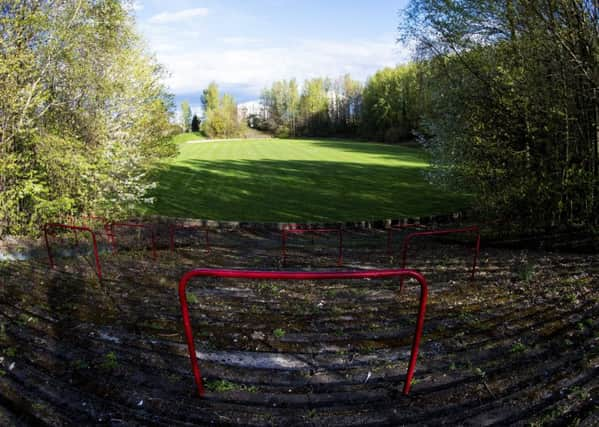Scottish football didn't care as Third Lanark slipped away


In the almost inevitable conclusion to a terminal decline that had started several years before, one of the Scottish Football League’s founding members breathed their last.
That was 50 years ago and while there is a sense of sentimental sorrow and regret now, at the time the loss was less widely mourned as the nation immersed itself in the triumphs of that era.
Advertisement
Hide AdAdvertisement
Hide AdThat, after all, was the year the Lisbon Lions won the European Cup, the season Rangers reached the final of the European Cup Winners’ Cup and a time when Scotland brought the world champions, England, back down to earth with humbling alacrity.
Squeezed in amongst all that achievement, though, was the fate of Third Lanark.
Those contradicting fortunes have often been highlighted by commentators of that time, including the late, great Bob Crampsey, whose house overlooked Cathkin Park, where his memories of one of the game’s early great clubs were replaced by views of weeds and even trees sprouting up through the cracks of the Hi Hi’s – as Third Lanark were known – former home ground.
But in his book Flower of Scotland Archie Macpherson also talks of that 1967 – “the summer of love” – and the unbelievable way in which a club that had been treading water was simply allowed to slip beneath the waves almost unnoticed while the country’s gaze was diverted elsewhere.
As April was ending, Thirds went to play Dumbarton, not knowing it would be their last game. Days earlier, Celtic had become the first British team to reach the European Cup final, while the week before that Rangers played the first leg of a European Cup Winners’ Cup semi-final they would win before ultimately losing the final.
Elsewhere in the club game, Kilmarnock were gearing up to play in the Fair Cities Cup semis.
Which is why, according to Macpherson, Thirds’ troubles were viewed as little more than a teeny, tiny fly in the ointment. “Hardly anybody cared in 1967,” he said, summing up the feelings at that time. Buoyant and confident that the good times would continue to roll, the internal issues of Third Lanark were not allowed to dampen the mood.
“The feeling, in a way, was that they had it coming. That attitude helped bring about the most scandalous death in British football.”
Advertisement
Hide AdAdvertisement
Hide AdThe nostalgia and the regrets only came later, when the paint on the abandoned crush barriers started peeling and the moss and plants crept over the stone terracing, covering but failing to obscure the history of the ground and the feeling of loss.
Cathkin Park has always served as a visible and haunting reminder of what was lost 50 years ago and a museum piece judging football fans the length and breadth of Scotland for their torpidity.
Only seven years before their demise the club had been runners-up in the League Cup, then, in 1960-61, they finished third in the league, drawing in average crowds of more than 11,000. Five seasons later they were relegated to the Second Division, never to return.
By then they were in the grasp of William G Hiddleston, who became the main shareholder of the club, and a man hellbent on running the club into the ground, apparently so that the land could be sold to property developers.
By then the average crowds had dwindled to 2,701. By the end of the 1966-67 campaign, as the club was unwittingly making its curtain call, that number had plummeted further, with only 700 hardy and stubborn souls attending Third Lanark’s games.
“In the three years from 1964, players were sold for much less than their market value,” wrote Crampsey in the book The First 100 Years, recounting how star player Jimmy Goodfellow was “astonishingly” given a free transfer.
“The ground was not maintained, players were paid tardily and then in silver, there was no water for showers after the match, transport to away games was unavailable and there was a host of unbelievably petty annoyances of a similar nature.
“It was hard to resist the conclusion that the object of all this was to make Third Lanark such an unattractive club to play for that no player would willingly come to Cathkin Park.”
Advertisement
Hide AdAdvertisement
Hide AdBut still they did. Right up until that last game, when Drew Busby netted to become a piece of football trivia as the last man to score for a club that went to the wall that summer, with debts of £40,000 and courtesy of a majority shareholder seeking to make a quick return by selling the ground to property developers.
“I was never concerned with the money stuff; I only wanted to play football,” said Busby, who went on to bigger and better things. “I was a wee boy in a dream, raw but full of running.”
But as Scottish football looked the other way, Third Lanark ran out of time and options.
Half a century on there is talk of a return. Having marked the 40th anniversary of the club’s disappearance from the leagues by rising from the ashes, reforming and fielding a senior team in the Glasgow Amateur leagues, the ambition is now to return to Cathkin Park.
Five decades on, people are taking an interest. Suddenly the past matters.
It is not just where past glories lie. It is where regrets of a nation, momentarily distracted by the silverware and success, linger.